Archive for the ‘Celtic Asteroids’ Category
Arthur is a central figure in the legends making up the so-called Matter of Britain. The legendary Arthur developed as a figure of international interest largely through the popularity of Geofrey of Monmouth’s fanciful and imaginative 12th-century History of the Kings of Britain. In some Welsh and Breton tales and poems that date from before this work, Arthur appears either as a great warrior defending Britain from human and supernatural enemies or as a magical figure of folklore, sometimes associated with the Welsh Otherworld, Annwyn. Geoffrey depicted Arthur as a king of Britain who defeated the Saxons and established an empire over Britain, Ireland, Iceland, Norway and Gaul. Many elements and incidents that are now an integral part of the Arthurian story appear in Geoffrey’s Historia, including Arthur’s father Uther Pendragon, the wizard Merlin, Arthur’s wife Guinevere, the sword Excalibur, Arthur’s conception at Tintagel, his final battle against Mordred at Camlann and final rest in Avalon.How much of Geoffrey’s Historia (completed in 1138) was adapted from such earlier sources, rather than invented by Geoffrey himself, is unknown.
Some scholars argue that Arthur was originally a fictional hero of folklore—or even a half-forgotten Celtic deity—who became credited with real deeds in the distant past. They cite parallels with figures such as the Kentish totemic horse-gods Hengest and Horsa, who later became historicised.
Bear meanings continue to be symbolic of bravery as Germanic and Celtic deities Artio and Thor are often depicted with the bear. Indeed, the bear is a tremendous symbol of the warrior and bravery to the ancient celts.
In native American folklore the bear is also associated with the warrior and bravery, it is also associated with protection and nurturing especially motherhood.
In the natal chart Arther highlights the warrior within us all that fights for and protects those he loves.
In 1649
To St. George’s Hill,
A ragged band they called the Diggers
Came to show the people’s will
They defied the landlords
They defied the laws
They were the dispossessed reclaiming what was theirs
We come in peace they said
To dig and sow
We come to work the lands in common
And to make the waste ground grow
This earth divided
We will make whole
So it will be
A common treasury for all
Epona was a Celtic Goddess of fertility commonly depicted with Cornucopia, ears of corn and foals. This connection with horses has linked her to Rhiannon the Divine Queen who represented the land in marriage to the King. Rhiannon and foals may also be connected to the afterlife and ancestors as Epona may also as a representation of the land of their forefathers.
The sin of property
We do disdain
No man has any right to buy and sell
The earth for private gain
By theft and murder
They took the land
Now everywhere the walls
Spring up at their command
Epona Goddess of fertility was worshiped throughout Europe but Epona became Romanised and only her name remained unchanged as she became the Goddess of the Roman Cavalry due to her connection to horses.
They make the laws
To chain us well
The clergy dazzle us with heaven
Or they damn us into hell
We will not worship
The God they serve
The God of greed who feed the rich
While poor folk starve
Epona today is only associated with horses the most prominent of the Celtic Goddesses still calls to us through the asteroid named after her.
We work we eat together
We need no swords
We will not bow to the masters
Or pay rent to the lords
Still we are free
Though we are poor
You Diggers all stand up for glory
Stand up now
From the men of property
The orders came
They sent the hired men and troopers
To wipe out the Diggers’ claim
Tear down their cottages
Destroy their corn
They were dispersed
But still the vision lingers on
In the natal chart Epona represents our commonwealth, mother earth as provider of all our needs aspects to this asteroid indicate a strong belief in mother earth and in the rights of all men to access her bounty.
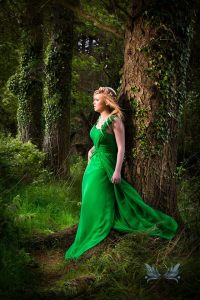
photography courtesy of Rodger Hunter Photography
Rhiannon means Divine Queen and is the incarnation of the land. Rhiannon in this role is wed to the King of the Land who in Celtic Culture is wed to the soil and thus forms a stewardship of the land, the Kings of Scots ruled the people of Scotland and not the land. This marriage to the land was symbolised by the future king standing on sacred rock and swearing a vow. The Stone of Destiny was used for this purpose and as such is seen as a symbol of Scotland.
Marriage to the land meant that the land was not a possession to be treated in any matter but a living dynamic part of life to be cherished, loved and protected.
The photograph above is taken in Girvan, Carrick; Carrick was the Ancestral seat of Robert the Bruce.
In the natal chart Rhiannon represents our connection to the land as part of our history culture and heritage. Strong aspects to this asteroid denote a deep sense of connection to the land and its history.
Rhianon in aspect to the ascendant denotes strong natural affinity to nature and love of the outdoors.
Rhianon in aspect to the Midheaven denotes ability to speak out on matters of the environment and connect with people’s sense of heritage.
Rhianon in aspect to the Sun indicates strong sense of identity, culture and heritage
Rhianon in aspect to the moon indicates strong roots and connections to the land going back many generations
Rhianon in aspect to Mercury indicates strong understanding of nature and the land.
Rhianon in aspect to Venus indicates strong love of nature and the land.
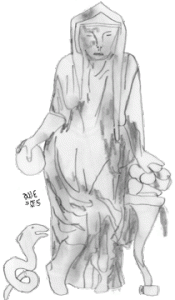 Sirona means astral or stellar and she was a Celtic Goddess of healing worshipped mainly in Gaul and along the Danube. Sirona is associated with healing springs and eggs, suggesting fertility as well which may explain the rare depiction at Sainte Fontaine where she is holding fruit and corn.
Sirona means astral or stellar and she was a Celtic Goddess of healing worshipped mainly in Gaul and along the Danube. Sirona is associated with healing springs and eggs, suggesting fertility as well which may explain the rare depiction at Sainte Fontaine where she is holding fruit and corn.
Sirona as the Goddess of healing, cleansing and fertility in the natal chart shows where these energies are needed and how we can best use them to help others heal and optimise their talents and abilities in life.
Sirona in aspect to the Sun may indicate the need to heal wounds to the ego that have affected self-esteem and in so doing allow the individual to help others in similar situations.
Sirona in aspect to the moon may indicate the need to heal old wounds from childhood and the ability to help others in such similar situations.
Sirona in aspect to Venus may indicate the need to heal old wounds relating to emotional insecurities that we have developed and in so doing enable others to move on from their insecurities by addressing the cause of those issues.
Sirona in aspect to Mercury may indicate the need to heal critical and destructive views of the self and to quieten the negative internal voice that says you can’t by addressing exactly where those voices came from and realising they were never true.
Sirona in aspect to Mars may indicate the need to look into the source of the person’s anger to address the causes and move forward in life.
Sirona in aspect to Jupiter may mean healing the person’s faith in life and in the joy of being alive and part of the natural world. This may relate to helping them reconnect with nature and the spiritual side of their personality.
Sirona in aspect to Saturn involves healing the person’s distrust of structure and consistency in life and may be related to them having to many or too little boundaries. In both cases the individual is healed by finding worth in the balance of this energy and its positives.
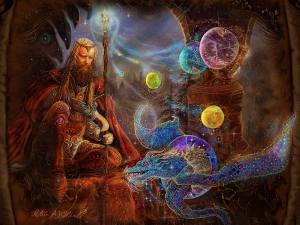
Myrddin Wilt, Myrddin Emrys, Merlinus Caledonensis or Merlin Sylvestris is both a historic and mythological figure. Myrddin, Merlin is a hawk and as such many places where these animals were common carry this name. Also more than one person called Merlin did and does exist. This makes it hard to sort out all the different mythological connections to Merlin as a historical character.
Merlin Sylvestris or Merlin Caledonesis was a Welsh Noble man who fought with his Welsh contemporaries against the King of Strathclyde who was also related through marriage. The battle of Arthuret was said to have been over a pointless argument about a lark’s nest. At Arthuret Merlin saw his kin’s men slaughtered in the battle and went mad with grief. He fled into the Caledonian forest where he lived with the wild beasts. Merlin was probably a follower of the older religions of Britain as St Mungo mentions meeting him and Merlin’s refusal to be baptized. Merlin’s lifestyle must have been well-known as St Mungo mentions meeting him whilst visiting with his Welsh contemporaries.
Merlin’s lifestyle would have been very symbolic of ancient pagan ways and would have added an air of mystery to this character. Merlin is reported to have died a triple death like Rasputin – triple death has a very special symbolism as denoting the person as a mystic. Merlin is reported to have died from falling off a cliff, impaling himself on a stake and drowning in the water.
St Mungo or saint Kentigern as he is also known meets in a deserted place with a naked, hairy madman who is called Lailoken, although said by some to be called Merlynum or Merlin, who declares that he has been condemned for his sins to wander in the company of beasts. He adds that he had been the cause for the deaths of all of the persons killed in the battle fought on the plain between Liddel and Carwannok. Having told his story, the madman leaps up and flees from the presence of the saint back into the wilderness. He appears several times more in the narrative until at last asking St. Kentigern for the Sacrament, prophesying that he was about to die a triple death. After some hesitation, the saint grants the madman’s wish, and later that day the shepherds of King Meldred capture him, beat him with clubs, then cast him into the river Tweed where his body is pierced by a stake, thus fulfilling his prophecy.
In the natal chart Merlin represents the creative energy within us all as part of the natural world around us. Merlin shows how we harmonise and express our connection to the earth and it’s cycles.
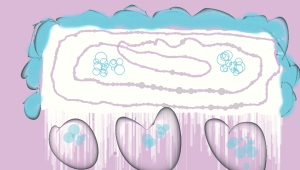
Asteroid Toutatis is named after the Celtic God Toutatis, God of the tribe. This little asteroid represents being part of the gang, family, friends, community.
Asteroid Toutatis in the natal chart shows bow we fit in or not as members of our family our community and neighbourhood. Dynamic aspects reflect difficulties in these areas, feeling unwanted as a child, feeling as if we don’t belong, difficulty finding our identity, difficulty being part of group, not finding the right friends or support, feeling excluded from society. Toutatis is also a Romeo and Juliet asteroid in aspect to certain asteroids and planets it signifies breaking the social norms, forbidden love.
Toutatis also shows how we work with others whether we have the ability to blend in at work or whether we need to be more dynamic, creative and we need individual freedom to do so.
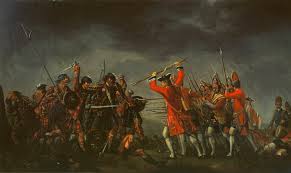
They came from Fort William with murder in mind
The Campbell had orders King William had signed
“Put all to the sword”- these words underlined
“And leave none alive called MacDonald”
Oh, cruel was the snow that sweeps
Glen Coe
And covers the grave o’ Donald
Oh, cruel was the foe that raped
Glen Coe
And murdered the house of MacDonald
The Cruithne is an Irish Gaelic name for some of the ancient peoples of Scotland and Ireland, in Scotland it refers to the Picti. Cruithne are the peoples who refused to come under Roman rule. Picti is Greek for painted people, they were also known as the Caledonii – great hard/tough people or forest people, but referred to themselves as Uerturiones.
The Picti had many tribes and Kingdoms, the Kingdom of Fib, Fife is still referred to as the Kingdom of Fife, yet these tribes united together in the face of Roman invasion, to fight for there way of life. Cruithne represents those that refuse to conform, those connected to ancient traditions and past.
Pictish art appears on stones, metalwork and small objects of stone and bone. In fife the caves at East Wemyss contain many pictish art work. The symbols and patterns consist of animals including the Pictish Beast, the “rectangle”, the “mirror and comb”, “double-disk and Z-rod” and the “crescent and V-rod,” among many others.
Cruithne has been incorrectly called “Earth’s second moon”. Cruithne does not orbit Earth and at times it is on the other side of the Sun. Its orbit takes it inside the orbit of Mercury and outside the orbit of Mars. Cruithne orbits the Sun in about 1 year but it takes 770 years for the series to complete a horseshoe-shaped movement around the Earth which is quasi- satellite orbit.
The Cruithne have always followed their own path, fought against prevailing attitudes of the time and held strong to their traditions, their ancestry and their independence. Cruithne promenant in the chart, is a connection to an ancient way of life, to be outside the mainstream, to battle for survival.





